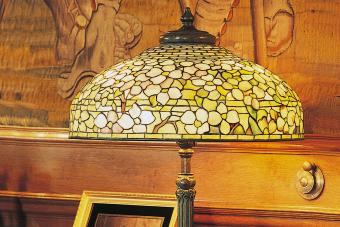
Vintage aircraft nose art is an art form that is related to the classic pinup art of the 1940s. This tradition was begun around World War I and has decorated many aircraft since.
The Beginnings of Nose Art
The first nose art was believed to be a sea monster that was painted on an Italian craft in 1913. During World War I, German ground crews painted mouths under the propeller spinners and the practice was taken up by other militaries. These early designs evolved over the years into more detailed works until World War II, considered to be the golden age of nose art.
Lonely and living under highly stressful conditions, servicemen named their aircrafts after wives, girlfriends, and movie stars. Soon images were created to accompany the name. These images gave the planes a unique look but also benefitted morale amongst the servicemen. By giving the planes unique names and characteristics, the men who flew them as well as the ground crew personalized the machines and it helped to raise both pride and morale.
Not all aircrafts were given feminine attributes, however. Some were given ferocious shark teeth or images of warriors to strike fear into the heart of the enemy and imbue the crew with courage. Dragons, mythical beasts, and almost any other design that can be imagined decorated the noses of planes and were labeled with names like:
- Victory
- Memphis Belle
- Night Attack
- Snake Eyes
Although vintage aircraft nose art was an important morale booster amongst the crew, most often it was directly against regulations. Military regulations state that there can be no decoration on aircraft other than the approved military symbols and insignias. Nose art was an open declaration of defiance toward authority and a statement of individuality in a time when conformity and discipline were the priorities.
Sexual Portrayal of Women in Vintage Nose Art
Although there were many different types of designs, scantily clad women were probably the most popular. The designs ran the gamut from completely nude to partially clothed women. This is easily explained when you consider that most nose art was created for planes that went into dangerous, combat situations. Most of those serving in and around these aircrafts were young, single men who were far from home, family, and social lives. There was no one to frown upon the racy images or those that created them.
In fact, the further the crew and aircraft were from home and military authority at headquarters, the more blatant the art. When the planes came back to the states for War bond promotion or other reasons, pilots were ordered to put clothing on their "girls". Some crews refused, merely placing a stamp "Censored" across the art.
The Artists
The creators of this nose art were usually men in the earlier years, although as the military changed over the decades, women also created the designs. The artists were most often just talented enlisted men and women who were not likely to be paid for their work. Materials were hard to come by and the artist had to be inventive. In the absence of turpentine jet fuel might be used to thin paints and clean brushes. The design was perhaps hastily painted on a hot aircraft between flights. The images were usually left unsigned and few records exist of the artists who created this unique art form.
The subject for the image could be created by just the pilot or by the pilot and his crew. Some images, like those on the B-29s, were as large as billboards while others on smaller aircrafts were comparatively tiny.
Examples of Vintage Aircraft Nose Art
There are many examples of vintage aircraft nose art in existence today. Some are sexually explicit, some are humorous, and some venture into the realms of fantasy. Each of the examples below is family friendly, although a little research will turn up some of the more explicit images.
While most people will never collect nose art there are books and reproductions available for those who are interested. There are numerous vintage aircraft museums around the United States that may have a few examples of these amazing works of art.







